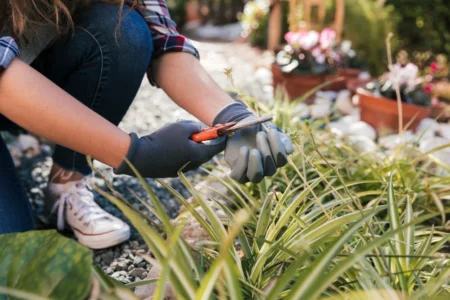 Landscaping is an essential aspect of home improvement that not only enhances the curb appeal of your property but also adds value and creates a welcoming outdoor space for relaxation and entertainment. By investing in landscaping improvements, you can transform your outdoor environment into a beautiful and functional oasis that reflects your style and enhances your quality of life.
Landscaping is an essential aspect of home improvement that not only enhances the curb appeal of your property but also adds value and creates a welcoming outdoor space for relaxation and entertainment. By investing in landscaping improvements, you can transform your outdoor environment into a beautiful and functional oasis that reflects your style and enhances your quality of life.
Landscaping improvements can enhance the beauty, functionality, and value of your home while creating a welcoming outdoor environment for you and your family to enjoy. By refreshing your lawn, defining outdoor living spaces, adding hardscape features, enhancing privacy and security, and embracing sustainable practices, you can transform your landscape into a beautiful and harmonious retreat that complements your home and lifestyle.
Take the time to plan and implement landscaping improvements that reflect your taste and enhance the overall aesthetic of your property.
Today, we’ll explore some landscaping improvements that can elevate your home’s exterior.
Refresh Your Lawn
A lush and healthy lawn is the foundation of a beautiful landscape. Start by aerating the soil to improve drainage and allow air, water, and nutrients to penetrate deep into the roots. Overseed any bare or thin areas to promote new growth and fill in gaps. Regular mowing, watering, and fertilizing will help maintain a vibrant and green lawn throughout the growing season.
Consider incorporating decorative elements such as flower beds, ornamental grasses, or shrubs along the edges of your lawn to add visual interest and texture. Planting a variety of colorful flowers and foliage can create a dynamic and inviting landscape that blooms throughout the year.
Define Outdoor Living Spaces
Create defined outdoor living spaces that cater to different activities and functions. Install a patio or deck where you can relax, dine, and entertain guests. Choose durable and low-maintenance materials such as pavers, stone, or composite decking for longevity and easy upkeep.
Enhance your outdoor living areas with comfortable seating, dining furniture, and accessories such as umbrellas, rugs, and decorative lighting. Incorporate features like fire pits, water features, or pergolas to add ambiance and functionality to your outdoor space.
Add Hardscape Features
Incorporate hardscape features such as pathways, retaining walls, or garden borders to add structure and visual appeal to your landscape. Use materials that complement your home’s architecture and blend seamlessly with the surrounding environment.
For example, a winding pathway made of flagstone or gravel can lead visitors through your garden and create a sense of discovery. Retaining walls can help level sloped areas and create terraced planting beds, while garden borders can define planting areas and prevent erosion.
Enhance Privacy and Security
Create privacy and security with strategic landscaping techniques. Plant tall shrubs, trees, or hedges along property lines to create natural barriers and screen out noise and unwanted views. Choose dense and fast-growing species for maximum effectiveness.
Incorporate lighting features such as pathway lights, uplights, or motion-activated floodlights to illuminate walkways, deter intruders, and enhance the safety and security of your home. Consider installing a fence or gate for additional privacy and protection.
Embrace Sustainable Practices
Implement sustainable landscaping practices to conserve water, reduce maintenance, and support local wildlife. Choose native plants that are well-adapted to your climate and require minimal watering and maintenance once established.
Install a rain barrel or cistern to collect rainwater for irrigation purposes, reducing reliance on municipal water sources. Use organic mulch to suppress weeds, retain moisture, and improve soil health. Incorporate pollinator-friendly plants to attract bees, butterflies, and other beneficial insects to your garden.
Picture Credit: Freepik



